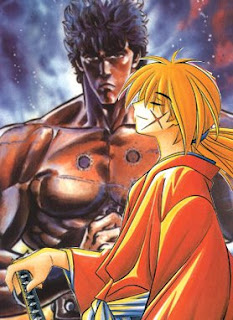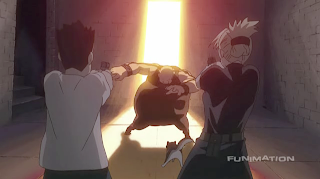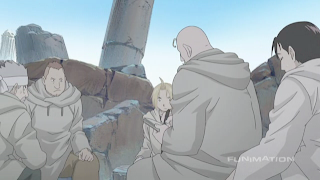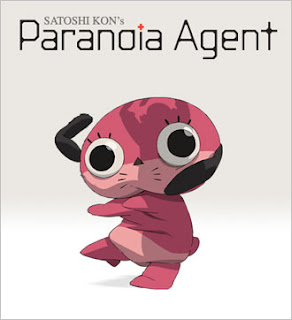At Otakon 2009 this past July, Ani-Gamers blogger Ink attended a press conference with Travis Willingham, where he and other members of the press asked questions of the anime voice actor. Ink transcribed the entire interview, but instead of posting the ten-page-long article containing questions from every outlet, we have published this shortened version, containing only questions from Ani-Gamers and slightly edited for context.
We also have the fully transcribed press conference available to readers. If you are interested in reading that instead, click here.
AG: Kind of glad you left off on [the topic of bringing a script to life in your own way], because I loved you as Iggy in Ergo Proxy. I watched both the sub and the dub, and how did you get your Iggy? Based on... Did you watch the original or did you just come up with your own Iggy?
TW: I did. I watched it. And because I didn’t detect any lisp, I didn’t detect any kind of character trait. The Japanese client explained to me that in the way that he was speaking – I don’t know Japanese speaking or anything about, I guess what would you call it, speaking techniques – he said the way that he spoke kinda portrayed a little bit of a kind of feminine quality to it. And I was like, oh okay, so there’s no lisp or anything. And they were very adamant about not making him super, like, flamboyant or whatever. They just said that he was an entourage, this bodyguard/partner/protector that is programmed by the user to kind of compliment her. And that she had programmed him to talk this way, and he even says that later in the series, when he starts doing that bipolar thing, he’s like (in Iggy’s voice) "What’s the matter? You programmed me this way." It’s almost like, it’s more, I almost went, like in my mind, that he was more a feminine British butler. He was just very (in Iggy’s voice) "Could I get you any portage? Perhaps we should look for some shoes." Just very smooth and easy. That was actually the first role I had after Mustang, so I came from like being extremely hetero, testosterone and over to “oh yes, let’s go get some shoes” and “Re-l, you look lovely today.” You know, a total departure, so it was really cool.
AG: Coming back to Fullmetal, have you been watching the new stuff?
TW: Yeah. FUNimation, their website got hacked, right, for one of the One Piece releases, so that was gone for a little bit. I’ve seen, I think, the first seven or eight episodes. I try to watch it when I can. And from what I’ve seen, so far it looks like it’s just been kind of a summary of what was in the last series, with the adjustments that are correct to the manga from what I can gather. So I haven’t seen a lot of new material, besides the first episode which I think was completely new as far as storyline, but I thought the animation was gonna be drastically different. It’s not. It’s not the same, and the music, I think, I liked a lot more in the first episode from what I’ve seen so far.
AG: More classical...
TW: Yeah, it was like the Russia National Symphonic Orchestra or something like that. So, yeah, I like what I’ve seen so far, but I’m kind of anxious to see the new material and be kind of surprised by what’s going on other than just the review and catch-up.
AG: What I was interested in, the role Mustang plays is kind of, in the new one, it’s more duty-oriented...
TW: Yeah!
AG: It’s very more solid than the other one. It’s more duty than emotion.

TW: Yeah, I’ve actually been wanting to ask Mike or anybody kind of in-the-know, because there’s not as much as that social personality side of him. It’s all very military mission-based. He’s like the straight line kind of... I haven’t heard Hughes bust him about getting a wife, I haven’t seen him stealing any girlfriends. There certainly hasn’t been any dog lines or miniskirt lines. Yeah, so far, he’s just been real straight-forward, which I guess will be interesting, because what I’ve heard from the manga, I mean the storylines are really different. So we’ll see what happens.
AG: I know voice actors usually have multiple projects going on at the same time, so, aside from The Hulk and the one you cannot mention, do you have any others you are extremely happy to be working on and can mention?
TW: Yes! What can I say that I’m working on. I can say that there are two new roles in Naruto that I’m working on. I don’t know if I can say the specific names, and a really popular character in Bleach which I just started working on. I gotta find out when they let us talk about these things... What can I say that I’m working on? In Dallas.... What did they announce...did anyone go to the FUNimation Industry Panel? Did they announce any news shows, the cast lists for any new shows? ... Eh, I’ll have to defer that until later so (laughing) I don’t get in trouble. But I will say they have really cool shows coming out. You know they have the license for Soul Eater? FUNimation does. I’ve seen some of that show, and it looks incredible. I love the animation.
AG: Where did you get your start in voice acting?
TW: Very strange. You know everybody has a weird story, and I was in college at TCU, Ft. Worth, TX, and I was in a stupid fraternity. One day we flipped one channel past ESPN, being lethargic and in our procrastinating greatness one day, and Cartoon Network was the next channel. And there was this show, with these giant guys with muscles and spiky blonde hair and they’re blowing things up and yelling really loud. And we were like “What in the name of God is this, and how much more can we see?” And we proceeded to, quickly, watch it every single day after that. And we would all be standing on our couches going “Ka-me-ha-me....” Girls would come in, think we were just absolute losers, and we would be like “leave our room of DBZ!” And the credits were rolling one day, and I saw Laura Bailey’s name in the credit list, and she was in the same theatrical agency that I had in Dallas, called her up as fast as possible, practically yelled through the phone why she was in this awesome show that I loved, and she told me that she recorded at FUNimation studios in Ft. Worth, like 10 minutes from my college. And I proceeded to beg and stalk her for the next 2 years. Begging to let me come and audition, and ... she never did. Dammit. Every time I saw her in audition, I was like “Help me. Help. Audition, FUNimation.” And it never happened.
Thank God for the Mike McFarlands of the world, because he was also an actor in Dallas, and after doing an independent movie with him and finding out he was Master Roshi in DBZ, I begged, pleaded, I was like “please let me come audition” and he let me ... introduced me to Justin Cook, who let me audition for Yanagiswa of Yu Yu Hakusho. I’m sure I didn’t do a fantastic job, but it didn’t suck the worst either, which I think it the key if you can go in and record something and just not absolutely blow it, then they’ll have you in for something else. And while Yanagiswa was a small and compact part, you know you’ll play the like Police Officer Fs and the Soldier B, I did a show, a theater show, with Colleen Clinkenbeard, who was the other co-director of FMA, and Justin Cook saw it, and he had risen in the ranks of FUNimation. He was like, “We got this character in a new show. I think you and he have a lot of jerk similarities. His name’s Roy Mustang, do you want to audition for him.” And I was like, coming from a DBZ fan, and I was like, Does he have any special abilities? “Well he’s the Flame Alchemist.” Tell me more. “He has these gloves, he snaps his fingers, and things blow up.” I was like, Done. Done! So I went to audition for it, got it, that ... everything just kinda happened after that. That was the learning experience, you know, I was terrified during Yu Yu Hakusho. Fullmetal Alchemist into Mushi-shi with Mike was kind of like my boot camp...voice actor boot camp, because it’s a craft and it takes a very specific skill set to do that stuff and do it quickly, which is what they ... that was where I kind of learned and started.
AG: If the new Mustang remains as static as he’s shown to be already, not to say he doesn’t have the potential for growth, but if he does and you get to voice him, will that present a problem? Like, will you be bringing your past character into it, or will you be able to just sort of stop cold and start a new Mustang?
TW: No, I think it’ll be carried over, because when Mustang was business, he was business. When he was giving orders, he was giving orders. That had a definite sound to it, you know, no-nonsense, clear, military command. Start, finish, done. So, from what I’ve seen so far, that’s all I’ve seen. I haven’t seen a whole lot of personal dialog between him and Hawkeye, between him and Hughes. There’s a little ribbing, I think I’ve seen, between him and Hughes, but not a lot. So I think it’ll just keep that military sound for right now, kind of that man-in-charge sound, and I guess when the more personal things come, if they come, then that’ll be kind of brought to the foreground, kind of that playful quality that came out every once in a while. And if it doesn’t, it doesn’t.

AG: Of all the voice work you’ve done, including plays, what do you prefer to do given the opportunity or does it depend on the role?
TW: Right, very good question. My first love was theater. I’m very fond of musical theater, strangely enough, and if theater paid what TV or film paid, I don’t know that I’d have ventured into either of those. Maybe later, but I love theater. If theater paid anywhere close to what TV does, I would just be on the stage, because I love a live audience. That’s just kind of my niche. I’m sure I woulda made it over at some point to try like an action movie or something fun like that or to try a video game, but theater was really my first love, and I think that theater actors just have that...you know. Not that non-theater actors are any less talented or whatever, I just think that theater actors are a different breed. They are weird. We are weird.
AG: When you’re recording in the studio, and I understand these things get like almost second-nature by time, but what do you find hardest? Is it syncing the [lip] flap movement, is it coming up with a distinct voice for the character, or is it something completely different?
TW: Right, it’s kind of a combination of the two, because you know you’re used to seeing lip flap. You’ll read the line first, you know you’re like, “ok line 236.” And it will be like “Kenichi, we need to run down to the forest and see if they’re there” or whatever. So you’re like “Kenichi, we need to run down to the forest and see if they’re there,” ok, then they preview it, and it’s like beep beep beep. You’re like, in your head, you’re kind of saying the line, but the lips might end faster than the line in your head. Going “oh, ok I need to say that really fast.” And you’ll be like, “Kenichi, we need to run down to the forest and see if they’re there,” and it’s still not fast enough. The lip flap ends. And then it’s up to you and the director to either rewrite the line or see if you can speed like a freakin’ auctioneer. (Emulates an auctioneer.) Sometimes you need to stretch it out too. (Slowly) “Kenichi, we need to run down to the forest and see if they’re there.” That’s kind of the tricky thing, it’s just seeing how much time you have and how do you fit it in and still sound like a human being...or not.
That's it! If you'd like to read the full transcription of the press conference, with questions from all of the media outlets that attended, click here.












